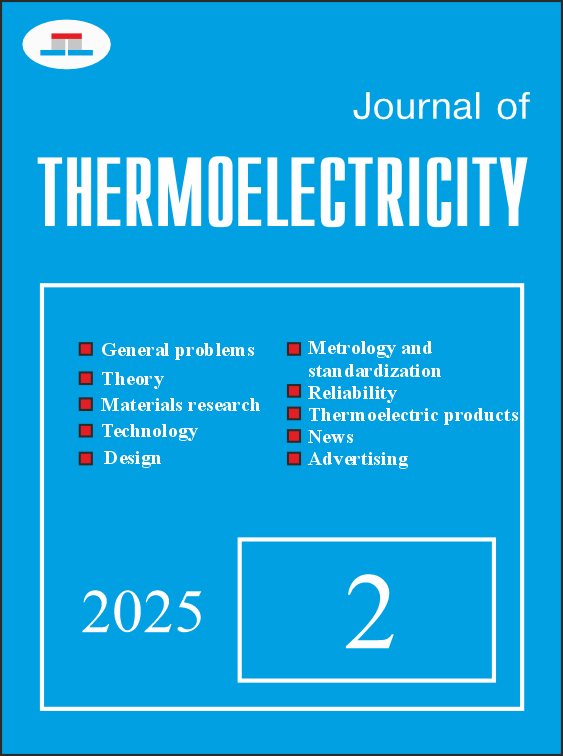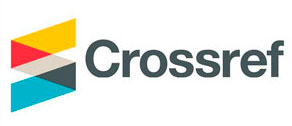Universal Relation for Thermoelectric Figure of Merit of Two-Phase Composites
DOI:
https://doi.org/10.63527/1607-8829-2025-2-17-24Keywords:
composites, isomorphism theory, effective thermoelectric properties, effective thermoelectric figure of meritAbstract
In the paper, a universal expression for the effective thermoelectric figure of merit of a composite two-phase material is found based on the isomorphism method. It is shown that to determine the effective thermoelectric figure of merit, a set of values of local kinetic coefficients of the phases, namely electrical conductivity, thermal conductivity, and thermoEMF, and the effective value of the thermoEMF coefficient is quite sufficient to use. To determine the thermoelectric figure of merit, it is not necessary to know the effective coefficients of electrical conductivity and thermal conductivity. Therefore, the effective figure of merit does not depend on the choice of approximation (effective medium approximation (EMA), flow theory, Maxwell approximation, etc.) for calculating the effective values of electrical conductivity and thermal conductivity.
References
1. Torquato, S. (2002). Random heterogeneous materials: Microstructure and macroscopic properties. Springer. https://doi.org/10.1115/1.1483342
2. Choy, T. C. (2016). Effective medium theory: Principles and applications. Oxford University Press. https://doi.org/10.1093/acprof:oso/9780198705093.001.0001
3. Snarskii, A., Bezsudnov, I. V., Sevryukov, V. A., Morozovskiy, A., & Malinsky, J. (2016). Transport processes in macroscopically disordered media: From mean field theory to percolation. Springer. https://doi.org/10.1007/978-1-4419-8291-9
4. Rowe, D. M. (Ed.). (2006). Thermoelectrics handbook: Macro to nano. Taylor & Francis.
5. Bruggeman, V. D. (1935). Berechnung verschiedener physikalischer Konstanten von heterogenen Substanzen. I. Dielektrizitätskonstanten und Leitfähigkeiten der Mischkörper aus isotropen Substanzen. Annalen der Physik, 416(7), 636–664. https://doi.org/10.1002/andp.19354160705
6. Bergman, D. J. (1978). The dielectric constant of a composite material—a problem in classical physics. Physics Reports, 43(9), 407–411. https://doi.org/10.1016/0370-1573(78)90024-1
7. Snarskii, A., Zorinets, D., Shamonin, M., & Kalita, V. (2019). Theoretical method for calculation of effective properties of composite materials with reconfigurable microstructure: Electric and magnetic phenomena. Physica A: Statistical Mechanics and its Applications, 535, 122467. https://doi.org/10.1016/j.physa.2019.122467




